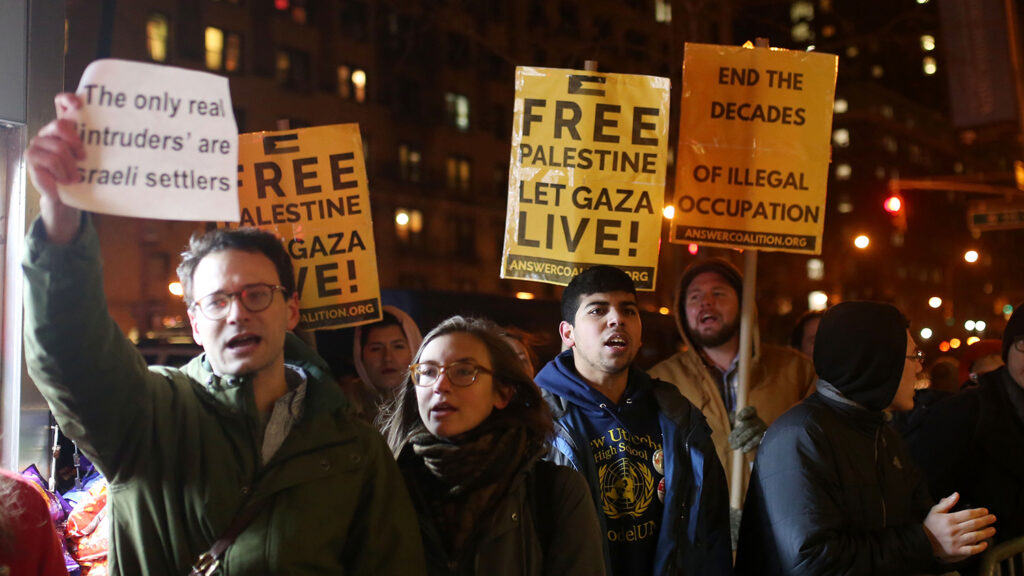The New York Times: A Bias Analysis
BY ADIEL RAMIREZ
The New York Times is one of the most trusted news sources in the world. It is the newspaper of record in the United States. Any reputable source like the Times has a responsibility to bring accurate, transparent reports to its readers. So it is important to assess how this outlet has reported on the matter that is top of mind for Jews around the world, Hamas’s October 7 attack on Israel and the ensuing war in Gaza. In the months since October 7, many in my community, myself included, have criticized the newspaper for, in its effort to report objectively on the war, sympathizing with Hamas. The Times has published many sympathetic articles about Gazan refugees, a few suspicious ones about Israeli sources, and far too many that trust Hamas sources as the equivalent of IDF sources. This led me to believe that the reporters at the Times are not reporting on the war objectively. However, after further research, I found that the New York Times’ coverage includes a wider array of perspectives than I originally thought. In this essay, I examine the bias in the New York Times’ coverage of the War.
An October 7 New York Times article titled “‘We Are at War,’ Netanyahu Says After Hamas Attacks Israel,” describes the events of October 7 politically and analytically. The article does not overlook the unspeakable horrors of October 7; it describes kidnappings, killings, bombings, and dead bodies strewn about Israeli cities. The article begins by listing statistics of dead and wounded Israelis and Palestinians. It calls the attack an “assault without recent precedent in its complexity and scale,” describing the ways that Hamas operatives entered Israel. The article quotes Mohammed Deif, the leader of Hamas’s military wing, who listed the ideological justifications and goals of the attack. The article devotes only a few short sentences to this explanation, not giving an ounce of credibility or logic to his arguments. It describes the international political responses and potential international involvements in the attack, the significance of its timing, and Israelis’ criticisms of the IDF’s preparedness. It recognizes that Hamas is in fact a terrorist group as designated by the United States and other nations. The article then describes the Gazan jubilation at the attacks. But, as the article states, after enduring the Israeli airstrikes, Gazans became more fearful of the situation. It notes the two-decade high of both Palestinian and Israeli deaths and recognizes that the Hamas attack was “condemned by most western countries, but praised by Israel’s enemies.”
In this article, the New York Times is fairly unbiased. Although it refers to Hamas terrorists as “militants,” it recognizes Hamas as a terrorist group and devotes a similar amount of paragraphs and sympathy to both Israelis and Palestinians. It doesn’t shift the focus by explaining the Israeli “occupation” of Gaza, nor does it try to make the attack seem like Israel’s fault by exploring the IDF’s deficit of intelligence at length. This makes journalistic sense. Israel had just suffered a horrendous terrorist attack on innocent civilians, and when this article was published, not much else was known. The Times is a world-renowned news source, not a sketchy website that openly spews anti-Semitic propaganda left and right. As such, on October 7, it didn’t deride Israel for suffering this attack but reported the preliminary facts.
Once Israel began to retaliate, as the war progressed and the dire state of Gaza became more front of mind than the sadistic events of October 7, the New York Times became more critical of the IDF and the Israeli government. If the above article from October 7 showed sympathy to a country attacked by ideologically-motivated rebels, later in the war, Times reports on Israel have attempted to paint a military desperately trying to clear its name to the global public. In a November 19 article titled “Israel Says Video Shows Hamas Tunnel Under Besieged Hospital,” the Times reporters trust Hamas intelligence and come off as suspicious of Israeli intelligence. The article is about Israel’s claims of a Hamas base located in the Al-Shifa hospital and the evidence the IDF says it found to support the claim. It describes the video footage of a fortified tunnel in the hospital complex as an effort to “bolster its allegations that Hamas has used the largest medical center in the Palestinian enclave as a base for its military operations,” writing the footage off as a political strategy that Israel employed rather than actual video proof of Hamas’ inhumane military practices. Throughout the article, the reporters use the same language to introduce Israel’s claims and Hamas’s claims about the hospital, as if Israel and Hamas share the same amount of legitimacy as democratic, trustworthy governments. The article furthermore notes that the death tolls in Gaza are provided by “health officials in the Hamas-run enclave,” almost but not really admitting that the Al-Shifa complex—and the death toll—are run by Hamas, which makes no distinction between civilian and military deaths. The article closes by noting that conclusive proof of the subterranean Hamas base has yet to be revealed due to the danger and sensitivity of investigating the hospital. In this article, the pro-Palestinian bias is understated, but still clear in the amount of suspicion the reporting casts on Israeli versus Hamas sources.
In a November 18 article titled “Hundreds Flee Al-Shifa Hospital Days After Israeli Raid,” the New York Times describes the effects of Israel’s retaliation to the October 7 attacks. The article claims that Israel raided the Al-Shifa Hospital complex, the largest hospital in Gaza. It explains that the Israeli military issued an evacuation order on the hospital and agreed to aid the safe evacuation of civilians. According to one witness, the article continues, many Gazans fled on foot. In reality, the Israeli military provided humanitarian aid to the hospital overnight and allowed patients to stay with medical personnel. The Israeli military entered the hospital to find conclusive proof of the Hamas command center they had believed was hosted in the hospital. Despite video evidence of weapons and enclaves, and even footage of hostages being taken to the hospital on October 7, the New York Times article states that Israel has “yet to provide conclusive proof of a subterranean, military base.” Here, the article delegitimizes Israeli sources, despite U.S. officials backing the intelligence1. The article ends with a description of the “raid,” noting the death tolls of both Israelis and Gazans. This article reflects the tone and wording of most New York Times’ coverage of the Israel-Hamas War. Although it is more or less an objective report of the facts, it undermines the authority of Israeli sources while emphasizing the sympathy-evoking state of the Gazans, thus subtly reinforcing the Gazans’ cause to the reader.
New York Times articles consistently criticize the Israeli government and military. However, they are not consistent in their biased presentation of the facts. The first article, from October 7, is decently fair, the second is understated in its bias, and the third encourages a certain perspective. With more recent articles covering the war, both reporting and opinion pieces, it is evident that the New York Times hosts a wide variety of writers with an assorted array of perspectives. Criticism of the Israeli military and government is widespread throughout its reporting, and the paper’s focus on Gazan suffering is poignant, but that only makes sense. Gazan civilians are, in fact, being uprooted by this war. Newspapers are bound to criticize foreign governments during a conflict. But one would hope this same criticism extends to Hamas. In conclusion, while the New York Times’ coverage of the Israel-Hamas War has a bias, it remains a trustworthy news source during this time of conflict and controversy. But readers would also be wise to diversify their news sources given the complexity and rapidly developing nature of the war.
Citations
Suggested Reading

A New Viewpoint on Diversity
Often, it seems that the people who talk about diversity never visit diverse communities. People seem to think that diversity is based on how one looks. True diversity is not about how someone looks, but how they act.

My Real Internal Conflict is Not One of Clashing Interests
When do my Jewish interests and American interests conflict? After much careful internal deliberation, I have concluded that they do not.

Regaining our Power Through Knowledge: The Solution to Rising Anti-Semitism on Campus
An emotional connection to our Judaism cannot be our only solace. Knowledge is the solution to the problem Jewish students face today.

America, Israel, and China
Tensions between the United States and China have been rising. Israel has been trying to remain in the middle, but now finds itself in the center of a house of cards ready to come crashing down.